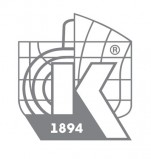Wind-Tunnel Testing of High-Rise Buildings and Structures

In recent years, there is a persistent surge in construction of unique objects of high complexity: huge clusteres of high-rise buildings, stadiums and largespan bridges. The main principle to construct such architectural masterpieces is to thoroughly consider all environmental factors that may influence the structures during their operation. The international and Russian construction regulations stated that one of the main factors is the aerodynamic load, for which correct assessment should be carried out simulation modelings in specialized wind tunnels.
The Case of Wind-Load Tests for Architectural Structures by the Krylov Center. The Krylov State Research Center has the largest wind tunnel in the North West. The parameters of the experimental setup are as follows: a closed-circuit wind tunnel with an open-throat test section; a cross section of the test part working part seen as an ellipse, its size being 2,5 × 4 m; the test section being 5 m. long; the frontal velocity reaching up to 80 m/s.
This structure has tested more than 60 models of residential houses and neighborhoods over the past 10 years. The standard aerodynamic tests are meant to:
• determine gross and distributed wind loads.
• evaluate the speed and the angle of the air flow in pedestrian areas.
• study the possibility of occurring resonance oscillations caused by the wind load.
• study wind conditions in the area where helipads are located.
• identify the areas with accumulated snow on the roofs of the buildings.
• identify preferable air-intake and exhaust devices.
• develop solutions that contribute to the reduction or complete elimination of the negative impact of wind-load factors.
Let us consider more thoroughly the most important types of tests that, when carried out, allow the architects to evaluate the possibility of occurring most dangerous phenomena that are associated with wind flows in the city.
Full content of this issue you can read here
The full version of the article can be read in our printed issue, also you can subscribe to the web-version of the magazine
 Text by: ANDREY GUZEEV; DMITRIY KORNILOV; ALEXANDER KOROTKIN, Doctor of Engineering;
Text by: ANDREY GUZEEV; DMITRIY KORNILOV; ALEXANDER KOROTKIN, Doctor of Engineering;
SERGEY SOLOVYEV, Ph.D. in Physical and Mathematical Sciences;
Federal State Unitrary Enterprise “Krylov State Research Center”


